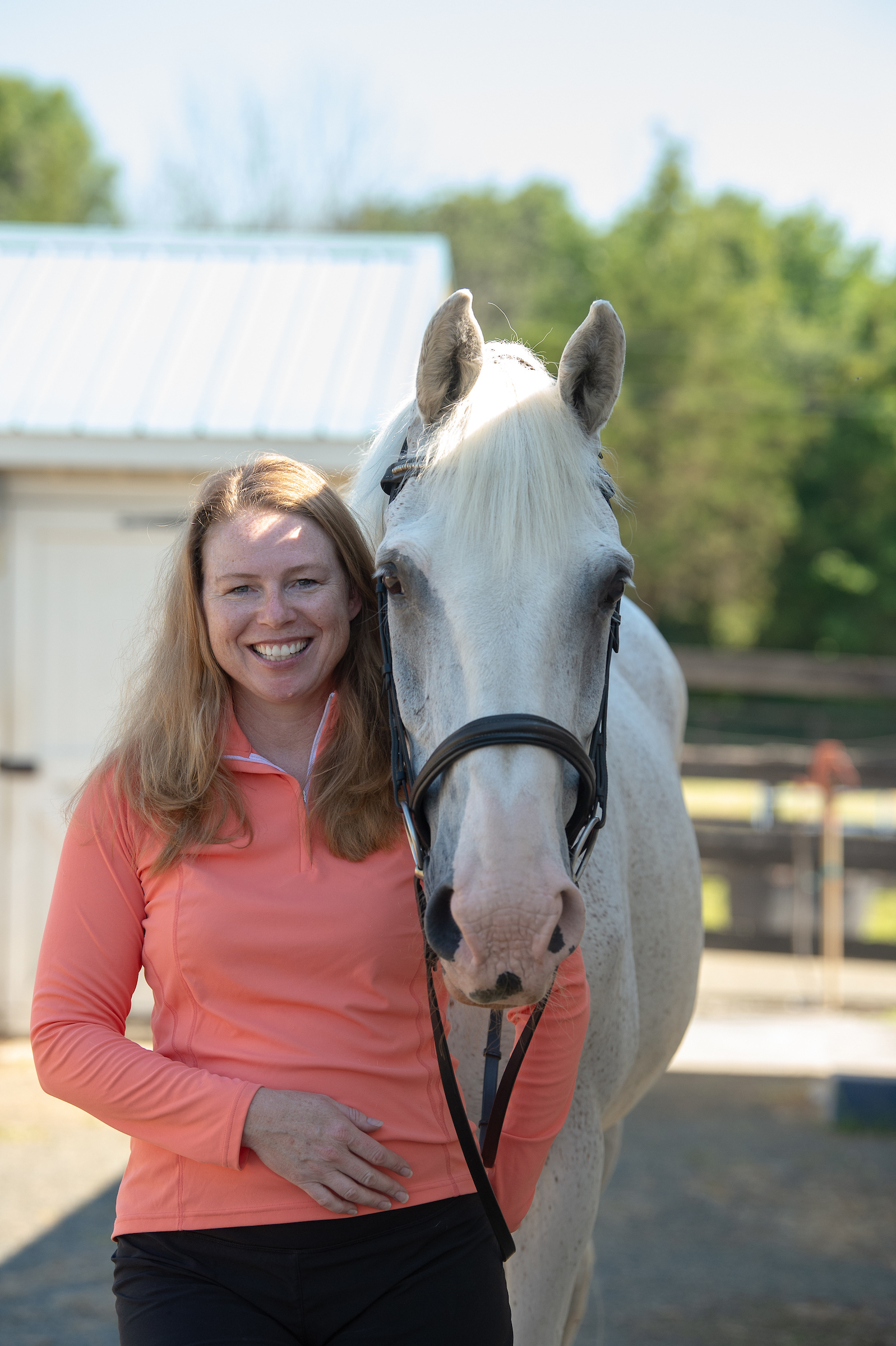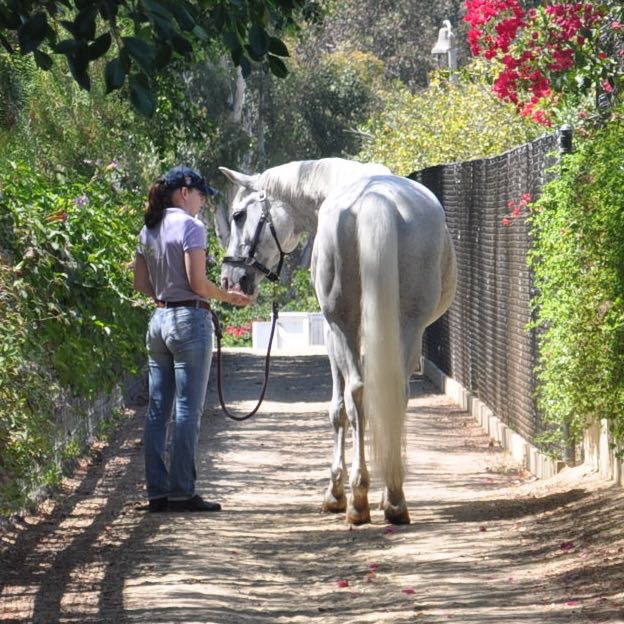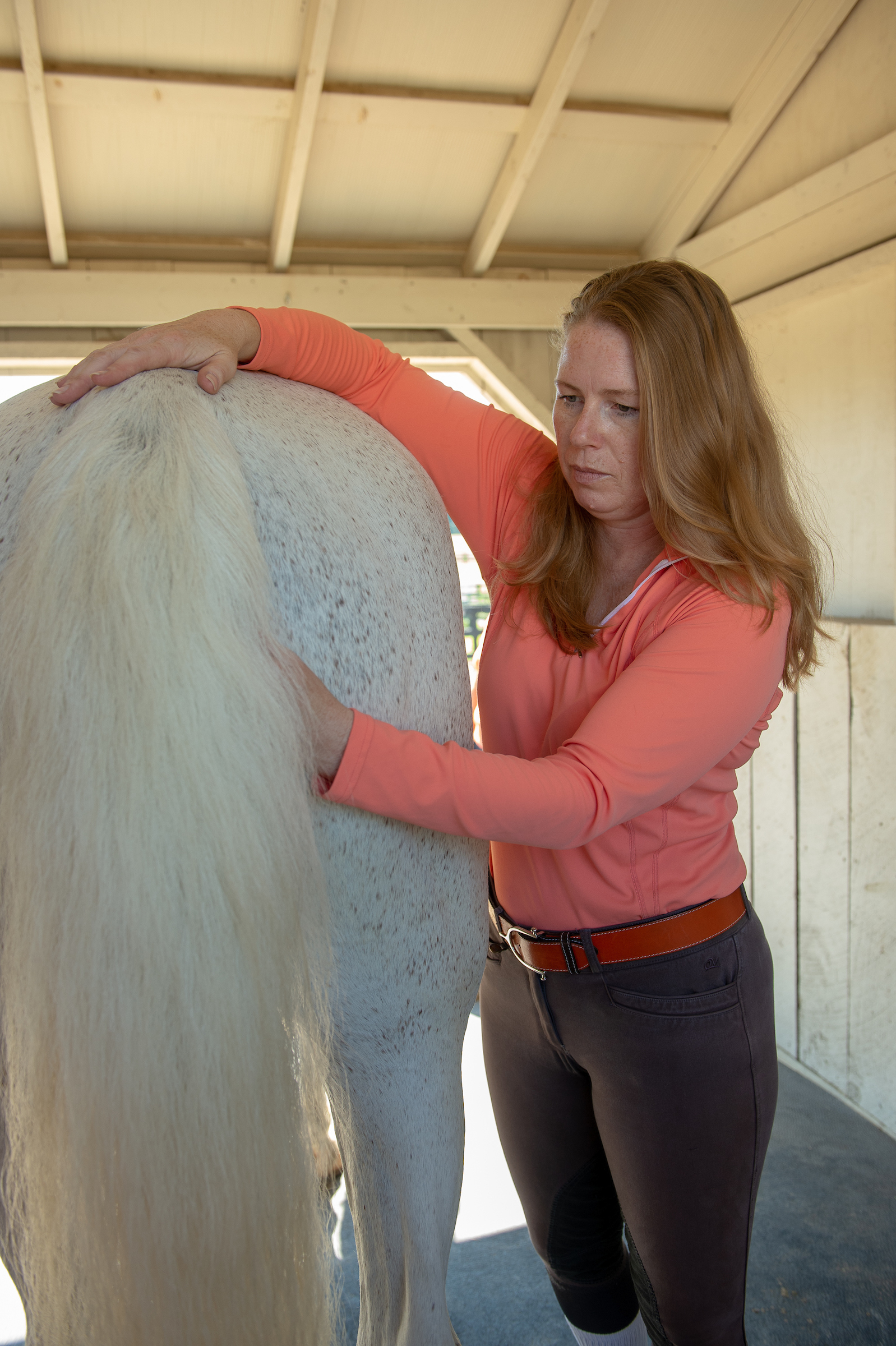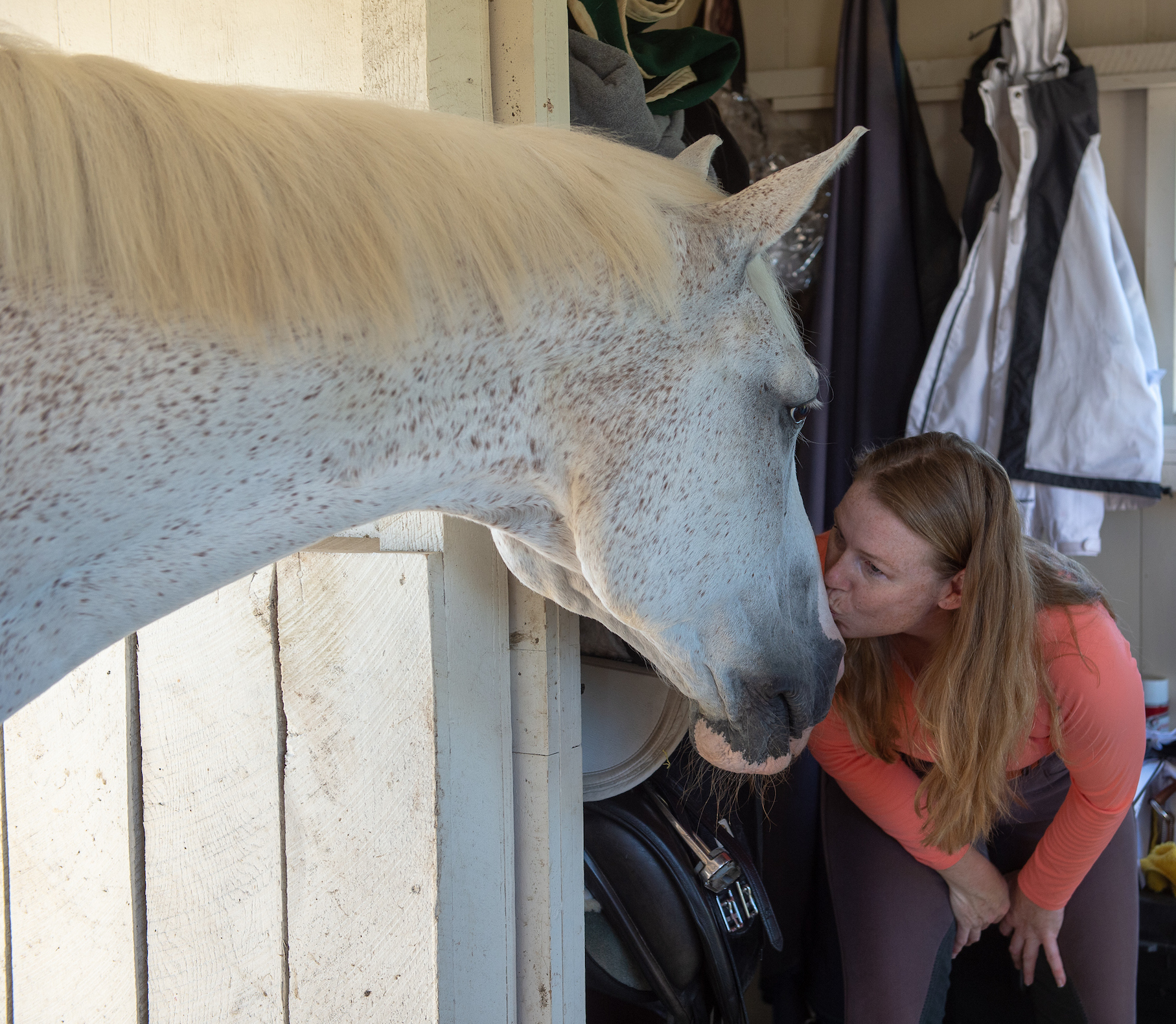
Liv Gude started life with horses as many typical girls do, pestering her parents for a horse when she was 5 years old. She filled her horse bug at summer camps and local riding programs and subsequently spent years in the saddle riding hunters, jumpers, reining and ultimately dressage. After leaving a job in the corporate world, she focused on learning all she could as a professional groom. She started her grooming career with Guenter Seidel in California in 2006, caring for his Olympic team bronze-medal partner Aragon.
After grooming for years, Liv saw the need to bring professional grooms and horse owners together in a supportive and educational manner. In 2011, she founded ProEquineGrooms.com, an online resource that provides information about grooming, employment and horse care. She also has written several articles about stable management for Practical Horseman magazine.
In the podcast with Liv, she and I discuss why she loves dressage, how and why she decided to become a professional groom and how she ended up working for Guenter Seidel—she saw a flyer in a tack store. She also shares what the typical day of a professional groom is like and gives lots of tips on grooming, improving the health of your horse and keeping you both safe.
Here are five of Liv’s suggestions from the conversation that will keep your horse healthy, happy and safe.
1. Memorize your horse’s body and routine so that you know when something is different, which could alert you to a potential problem.
As you do morning barn chores, be a collector of information: Notice how much water he drank and how much manure he produced the night before—“horses tend to be really habitual,” Liv says. Something you can do every day that you see him: Check his legs for any changes, like cuts or inflammation, and his body for bug bites. Use a fingertip to examine the “nooks and crannies” of his body, like his behind the elbows or between his hind legs. In the late afternoon or evening, follow the same routine and the morning. With all of this information, determine if something doesn’t seem normal.

“We don’t really groom the horse to make them show-ring presentable,” Liv says. “We groom the horse to memorize their bodies—to know their temperature, to know their habits, to know how much they’re eating and drinking. We really groom for their health. And it just so happens when we groom a horse for his health, a byproduct is they look really, really nice and can go down centerline and look amazing.”
2. Take your horse’s vital signs regularly

Every day or every time you see your horse, take his temperature, digital pulses, respiration and heart rate. This way you know what’s normal. “A horse is going to tell you that he’s sick when he’s really, really really sick. Not at the beginning of something,” which is ideally when you want to catch it. Checking his digital pulses around the fetlock are a good indication of what’s going on in the feet. If one isn’t normal, it might be a sign of a hoof issue. Or if your horse travels and competes in shows, checking his vital signs, especially his temperature, could alert you early to an illness, such as shipping fever. If his temperature is elevated after a trip, speak with your vet immediately to get a head start on treatment if needed.
3. Don’t panic if something is different.
As you’re memorizing your horse’s body, routine and vital signs, don’t panic if something is different. Step back and look at potential contributing factors. Maybe he had an extra hour of turnout the day before and that’s why there is one less pile of manure in his stall the next morning. Or if you check the digital pulses around his fetlocks and find that one is stronger than normal, consider if was he standing out in the hot sun or could he have stepped on a stone. “You have to take it as ‘This is a sign. Let’s look for other things that might be happening,’” Liv says. “For example, what are the digital pulses on the other legs. So expand out and never ever be afraid to call your vet in a panic.”
4. Write in a journal to keep track of the day-to-day details and notice trends.
You can memorize your horse’s legs and know where he has scars and scrapes, but you also need to look at the bigger trends, like is he keeping the same weight or as the seasons transitions into fall and winter, is your horse dropping weight. When you see your horse every day, it’s hard to see the bigger trends. “Get a journal … write it down because it’s a lot,” Liv says. “I board my horse and he’s got a binder that if I’m out of town and the owner needs to find out this, that or the other about him, she can look in the binder. And it’s ‘oh, he was shod two-and-a-half weeks ago. His blanket will be back from the cleaner this day, not a problem. So all of that is there for my own memory and help with my own memory, but for the other care takers on the property so they don’t have to text me if I’m on a work trip.”
5. Let your horse get dirty, then groom, groom, groom.
Letting your horse get really dirty and then grooming him will encourage you to curry him more. Over time, this will allow the horse’s natural oils, called sebum, to coat the hairs, which will help repel dirt and get out stains. In turnout, “I really let him be as dirty and gross as he wants to because that makes me currycomb him more, and the more you currycomb him and the more you let him be oily and gross himself, the skin is actually going to get better.”

Also as you groom, continue your investigation into how your horse is feeling. “I’ll get down to the business of grooming where I’m also paying attention to what does their body feel like under my hand? Are there extra itchy places involved? Was there a sting? Just kind of noticing the big-picture things.”
Liv recommends 10 minutes of currying for each of your horse’s sides. If your horse is gray and has a grass stain, you can spot clean with a no-rinse shampoo. If you use too much product often, like a blueing shampoo, the hair will become brittle and pick up more dirt.
6. Be safe.
Realize that horses can spook at anything. “Bombproof doesn’t exist,” Liv says, so don’t sit on the grass while grazing your horse, crawl under him or drop to your knees to take care of his lower legs, “which is great you’re working on his lower legs, but if you’re on your knees, you have to get off your knees and then get up. If you’re squatting, you can get up a lot easier,” if the horse moves suddenly. Another tip is to groom with one hand and keep the other hand on your horse so you can feel if he starts stepping into you.
Part of being safe is making sure you are training your horse—not the other way around. For example, if your horse paws and you pet him and say, “No, no, stop that, knock that off” and push him aside a little bit, he’s just trained you to pay attention to him when he misbehaves. “I had a horse that pawed and I was like, ‘I’ve tried everything,’ and then I realized the one thing I hadn’t tried was to walk away. So he would start to paw and I’d be like, ‘Fine.’ I put down all my stuff and walked away to where he couldn’t see me. And he’s like, ‘What just happened?’ As soon as he stopped pawing, I would come back. If he started pawing again, ‘Nope, see you later.’ And he quickly learned that his behavior that used to bring me to him now sent me away.”
More stable management articles with Liv:
• How to select and use a cooler for your horse
About the Practical Horseman Podcast
The Practical Horseman podcast, which runs every other Friday, features conversations with respected riders, industry leaders and horse-care experts to inform, educate and inspire. It is co-hosted by Practical Horseman editors Sandy Oliynyk and Jocelyn Pierce. Upcoming episodes are with eventing Olympian Boyd Martin, show-jumping Olympian Laura Kraut and California hunter, jumper and equitation trainers Carleton and Traci Brooks. Find the podcast at iTunes, Stitcher and Soundcloud or wherever you get your podcasts.







